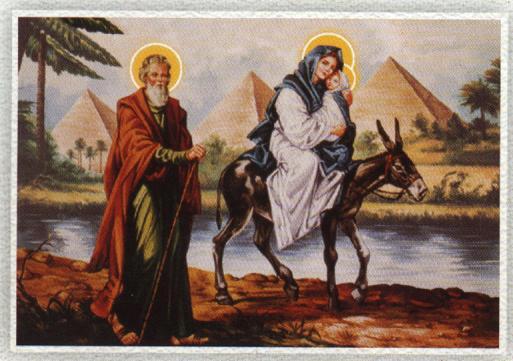|
|
|
|
|
|
| In the footsteps of Jesus, Mary and Joseph in Egypt |  | Like India, Egypt — an ancient civilisation woven of many strands — is pulling out all the stops to put its Coptic Christian heritage on par with Spain, Italy, Jordan and Israel. Even Brazil’s magnificent mountain-top statue of Christ the Redeemer is a big tourist draw! And so it was that the Egyptian government was out in full strength with the Coptic Christian community and its spiritual head Pope Tawadros II, alongside diplomats, public figures and the clergy at the grand launch of the mapping of the 2,000-year-old journey of the Holy Family (Baby Jesus, Virgin Mary and St Joseph) into Egypt to escape the fury of King Herod who, on hearing from the Magi that a new King had been born in Bethlehem, ordered the massacre of baby boys under the age of two.
Prime Minister Ibrahim Mehleb had also attended the October 11 reopening of the 1,700-year-old Hanging Church in Cairo after 16 years of painstaking restoration by Egyptians and Russians. What began in 1998 under the leadership of the then President Mubarak, the renovation process was inordinately delayed by the death of Pope Shenouda III and the events of the January 25 revolution in 2011. The EU travel advisories have been lifted since then with the Germans leading the way as its tourism department held an annual conference in Luxor.
Hit by domestic instability, Egypt has put intensive efforts into opening up new tourist destinations. In 2013-14, tourist arrivals touched 9 million, down 42% from 2009-2010. It may be mentioned that the Christian sites are adjacent to Pharaonic and Graeco Roman antiquities, so tourists need not limit themselves to Christian monuments. The Holy Family project is part of the continuing efforts by the government to preserve and maintain Egyptian antiquities from all eras in cooperation with the tourism department. Accordingly, a hefty 101 million Egyptian pounds were spent on renovating the Hanging Church which was built during the Roman persecution of Copts and is named for its location above the gatehouse of the fortress. Roofed with palm fronds resembling Noah’s Ark ( remnants of which have been found on Turkey’s Mount Ararat), the church has 110 icons, most notable of which is the icon of the Virgin Mary which is known as the Mona Lisa of icons.
At the October 25 event, both Pope Tawadros II and tourism minister Hisham Zazou noted that the Holy Family’s sojourn in Egypt is commemorated by churches and monasteries built on places giving sanctuary to Mary, Joseph and the infant Jesus. To avoid a murderous Herod, the Holy Family had crossed uncharted terrains across wastelands, enduring many hardships in an arduous 2,000-km-long journey.
The Family had travelled on foot, donkey and felucca (small boat) for their journey. I had backpacked my way through Israel’s first largely peaceful intifada. Only a small part of the trail is documented by Pope Theophilus 23rd Patriarch of Alexandria (384-412 AD). I had taken a cab from Bethlehem to Gaza, zipped past Al Farma and Al Arish to halt at Port Said. It was the Holy Family’s last stop in the Sinai. My last stop was Cairo’s Al Matariyah and Ain Shams (ancient Heliopolis, the site of the oldest university in history. This time around, we travelled in airconditioned comfort to the fortress-like Wadi El-Natrun where the Copts fended off Berbers, to Maadi where the Family had boarded a sailboat which ferried them up the Nile to a sanctuary in the caves of Gabal El Tair (Bird Mountain) Al Minya, Al Muharraq and Deir Dronka in Assiut. Today, the Coptic Church continues the tradition of welcoming pilgrims (and needless to add tourists) to stay at no cost. | | | | | 24/11/2014 | | http://www.dnaindia.com/analysis/column-in-the-footsteps-of-jesus-mary-and-joseph-in-egypt-2037885 |
|
|
|
|
|